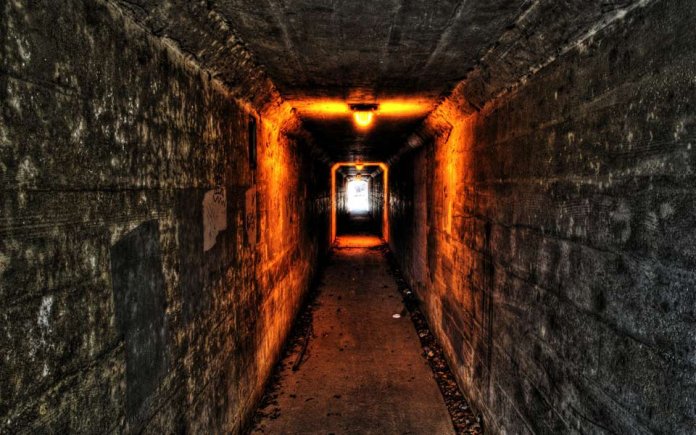Our world is full of striking contrasts. It has beautiful corners, as if created by the hands of angels, and there are terrifying places to which only an "adrenaline addict" will dare to go in search of a particularly thrill. Here are the 10 scariest places in the world.
10. Catacombs of the Capuchins, Palermo, Italy
 These eerie catacombs appeared at the end of the 16th century, when there was no room for corpses in the cemetery at the Capuchin monastery. At first, they were intended exclusively for the burial of monks, but when rumors spread about the natural processes of mummification taking place in the catacombs, the locals also wanted to be buried there (in their best clothes, of course). But such an honor fell not for everyone, but only for the famous townspeople, benefactors and patrons of the monastery.
These eerie catacombs appeared at the end of the 16th century, when there was no room for corpses in the cemetery at the Capuchin monastery. At first, they were intended exclusively for the burial of monks, but when rumors spread about the natural processes of mummification taking place in the catacombs, the locals also wanted to be buried there (in their best clothes, of course). But such an honor fell not for everyone, but only for the famous townspeople, benefactors and patrons of the monastery.
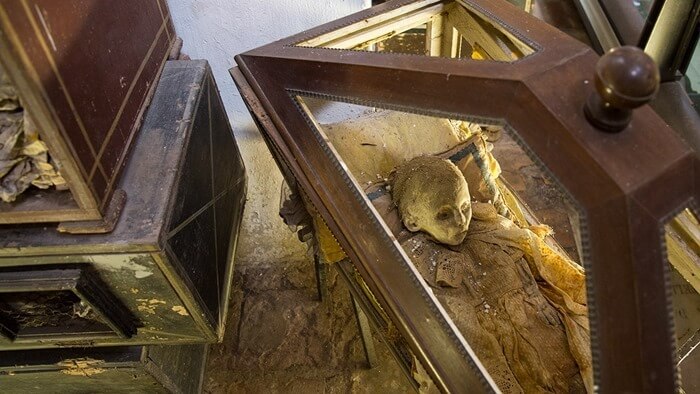 As a result, additional corridors and rooms (cubicles) had to be dug to bury everyone. Unlike other catacombs, the Capuchin underground cemetery contains only mummified, skeletonized and embalmed bodies. It is the largest mummy necropolis in the world.
As a result, additional corridors and rooms (cubicles) had to be dug to bury everyone. Unlike other catacombs, the Capuchin underground cemetery contains only mummified, skeletonized and embalmed bodies. It is the largest mummy necropolis in the world.
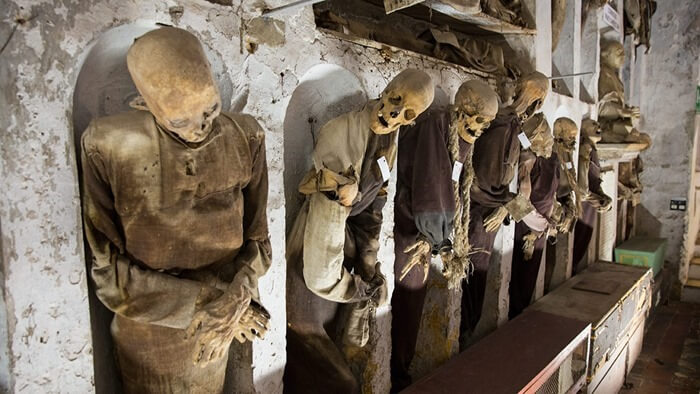 Currently, there are about 8000 bodies in the underground tombs of the Capuchins. The last burial took place in the 20s of the twentieth century. There are separate corridors, including for monks, for prominent people, for children under 14, and even for virgins. The corpses are more like museum exhibits, they are dressed in rich outfits, and their bodies are perfectly preserved. Taking photos in one of the most terrifying places on Earth is prohibited, and discussions are underway about completely banning onlookers' access to the catacombs.
Currently, there are about 8000 bodies in the underground tombs of the Capuchins. The last burial took place in the 20s of the twentieth century. There are separate corridors, including for monks, for prominent people, for children under 14, and even for virgins. The corpses are more like museum exhibits, they are dressed in rich outfits, and their bodies are perfectly preserved. Taking photos in one of the most terrifying places on Earth is prohibited, and discussions are underway about completely banning onlookers' access to the catacombs.
9. Aokigahara, Yamanashi Prefecture, Japan
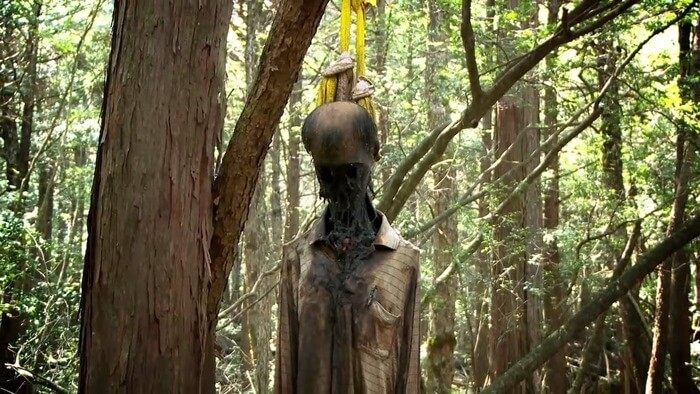 This seemingly tranquil forest at the foot of Mount Fuji has an extremely unpleasant history. It is the second most popular suicide destination in the world (after the Golden Gate Bridge). Every year, Japanese police, along with volunteers, comb the forest, finding 30 to 80 bodies. On forest paths, posters are displayed urging potential suicides to think about their loved ones and call for help.
This seemingly tranquil forest at the foot of Mount Fuji has an extremely unpleasant history. It is the second most popular suicide destination in the world (after the Golden Gate Bridge). Every year, Japanese police, along with volunteers, comb the forest, finding 30 to 80 bodies. On forest paths, posters are displayed urging potential suicides to think about their loved ones and call for help.
 Some believe that demons live in one of the most terrible places on the planet, who whisper to the poor fellows the idea of losing their lives. In the Middle Ages, desperate poor people brought their old and feeble relatives to Aokigahara, leaving them to die of hunger. There is a belief that the spirits of the dead did not leave their last refuge and take revenge on the living for suffering.
Some believe that demons live in one of the most terrible places on the planet, who whisper to the poor fellows the idea of losing their lives. In the Middle Ages, desperate poor people brought their old and feeble relatives to Aokigahara, leaving them to die of hunger. There is a belief that the spirits of the dead did not leave their last refuge and take revenge on the living for suffering.
 More pragmatic people point to a high density of trees, which is why all sounds in the forest are muffled and it is easier to get lost there. Many tourists even mark their way with a ribbon or lace to make it easier to find their way back later. You shouldn't rely on the compass, it “goes crazy”, as there are deposits of iron ore in this area.
More pragmatic people point to a high density of trees, which is why all sounds in the forest are muffled and it is easier to get lost there. Many tourists even mark their way with a ribbon or lace to make it easier to find their way back later. You shouldn't rely on the compass, it “goes crazy”, as there are deposits of iron ore in this area.
8. Pripyat, Ukraine
 The scariest places in the world don't have to be full of dead people.An abandoned place full of invisible to the eye and therefore even more dangerous radiation, can be no less terrible than the last refuge of suicides.
The scariest places in the world don't have to be full of dead people.An abandoned place full of invisible to the eye and therefore even more dangerous radiation, can be no less terrible than the last refuge of suicides.
 The city of Pripyat, founded in 1970, was home to about 50,000 people at the time of the evacuation after the Chernobyl accident. Since that time, Pripyat has been an uninhabited city, although buildings, furniture and all other signs of life are located exactly where the previous owners left them. In classrooms, textbooks are left on desks, rotting dolls lie in toy beds, and photographs hang on peeling walls reminiscent of a carefree life.
The city of Pripyat, founded in 1970, was home to about 50,000 people at the time of the evacuation after the Chernobyl accident. Since that time, Pripyat has been an uninhabited city, although buildings, furniture and all other signs of life are located exactly where the previous owners left them. In classrooms, textbooks are left on desks, rotting dolls lie in toy beds, and photographs hang on peeling walls reminiscent of a carefree life.
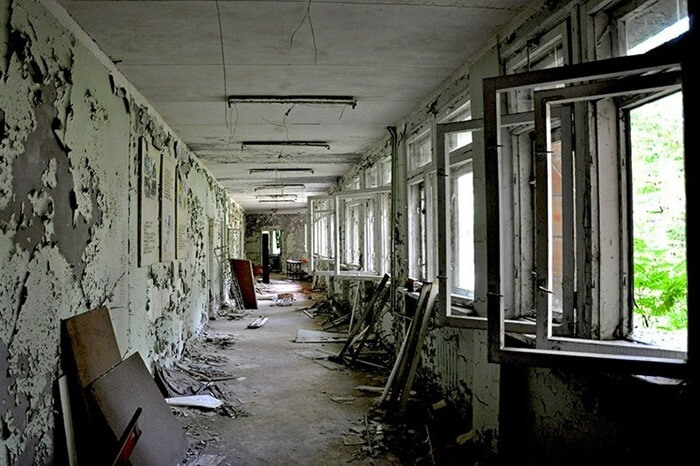 Today the most famous landmark of Pripyat is the rusty Ferris wheel in the city amusement park. It is unlikely that it will ever work again.
Today the most famous landmark of Pripyat is the rusty Ferris wheel in the city amusement park. It is unlikely that it will ever work again.
7. Vejo Rönkkönen, Parikkala, Finland
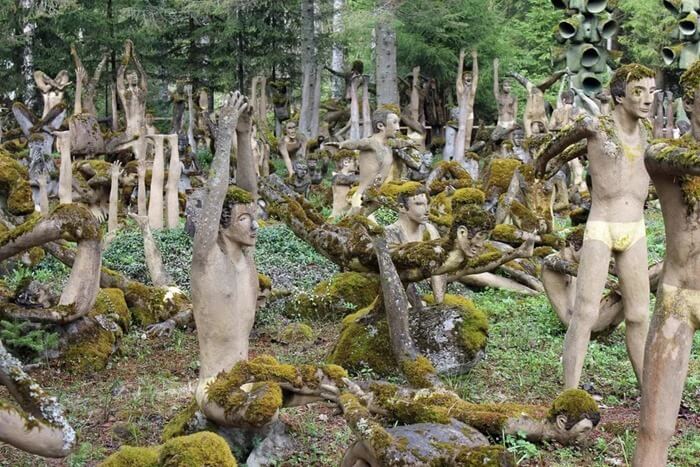 Veijo Rönkkönen was one of the most famous contemporary folk painters in Finland. He was also a recluse and refused to display his works in public. He built a collection of over 450 concrete figures of people and animals in his yard, creating an original and rather intimidating sculpture garden.
Veijo Rönkkönen was one of the most famous contemporary folk painters in Finland. He was also a recluse and refused to display his works in public. He built a collection of over 450 concrete figures of people and animals in his yard, creating an original and rather intimidating sculpture garden.
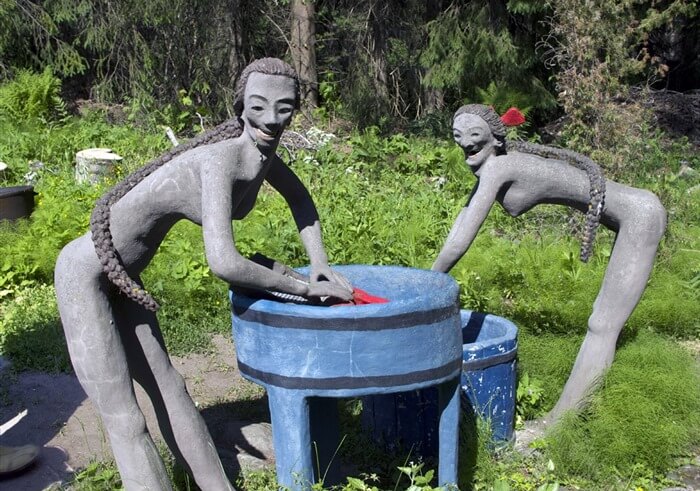 The largest composition is a group of approximately 200 statues arranged in various yoga poses. While there are a few unsettling things about this group of sculptures (like fake teeth), they aren't nearly as intimidating as the creepy, freestanding statues. How do you, for example, a statue of a nun with a toothy smile or a figure in a cloak, with black holes instead of eye sockets, stretching long arms towards people passing by? Visit the Veijo Rönkkönen Garden ... if you wish to never sleep well again.
The largest composition is a group of approximately 200 statues arranged in various yoga poses. While there are a few unsettling things about this group of sculptures (like fake teeth), they aren't nearly as intimidating as the creepy, freestanding statues. How do you, for example, a statue of a nun with a toothy smile or a figure in a cloak, with black holes instead of eye sockets, stretching long arms towards people passing by? Visit the Veijo Rönkkönen Garden ... if you wish to never sleep well again.
6. Nagoro, Japan
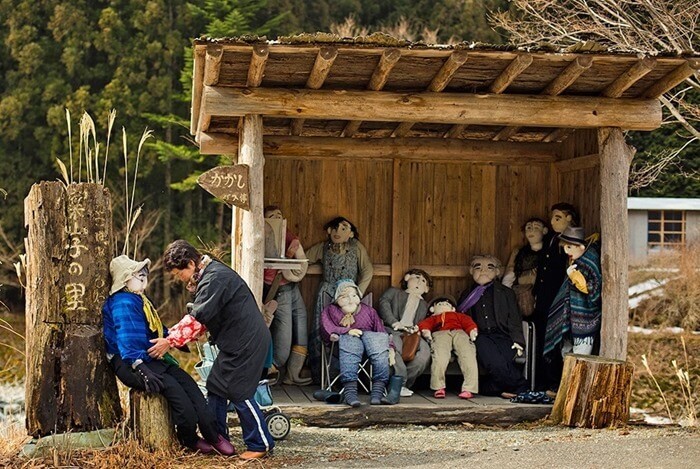 Among the scariest places on Earth is a tiny Japanese village with one very noticeable feature: life-size dolls outnumber the living population by a ratio of almost 100: 1.
Among the scariest places on Earth is a tiny Japanese village with one very noticeable feature: life-size dolls outnumber the living population by a ratio of almost 100: 1.
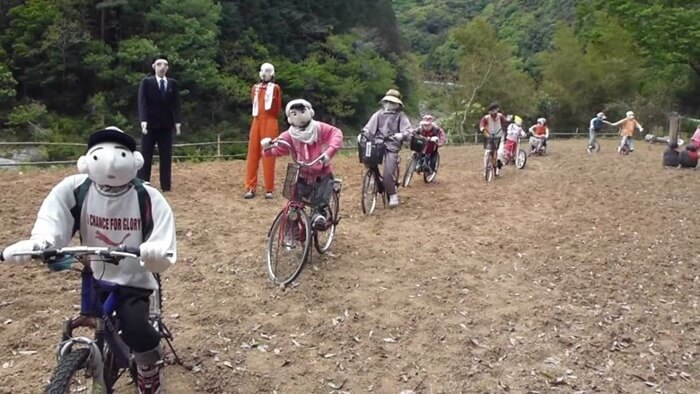 The dolls are the work of local artist Tsukimi Ayano, who started making replicas of her neighbors after they died or left the village.
The dolls are the work of local artist Tsukimi Ayano, who started making replicas of her neighbors after they died or left the village.
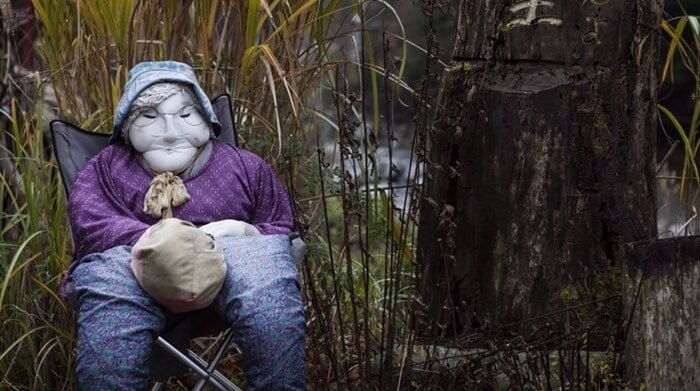 Eerie doppelgangers can be seen throughout Nagoro. Here is a fisherman sitting on the shore, but an elderly couple froze in eternal rest on a bench, but pupils-dolls filled the classroom waiting for the teacher.
Eerie doppelgangers can be seen throughout Nagoro. Here is a fisherman sitting on the shore, but an elderly couple froze in eternal rest on a bench, but pupils-dolls filled the classroom waiting for the teacher.
Now in Nagoro, there are about 350 dolls and less than 40 living people.
5. "Gate to Hell", Akhal province, Turkmenistan
 The “hellish” name for the crater located in the middle of the Karakum Desert in Turkmenistan was given by the local population. When Soviet scientists were looking for oil in 1971, they accidentally stumbled into an underground void (cavern), and the oil rig collapsed there, creating a crater and releasing dangerous methane gas into the air.
The “hellish” name for the crater located in the middle of the Karakum Desert in Turkmenistan was given by the local population. When Soviet scientists were looking for oil in 1971, they accidentally stumbled into an underground void (cavern), and the oil rig collapsed there, creating a crater and releasing dangerous methane gas into the air.
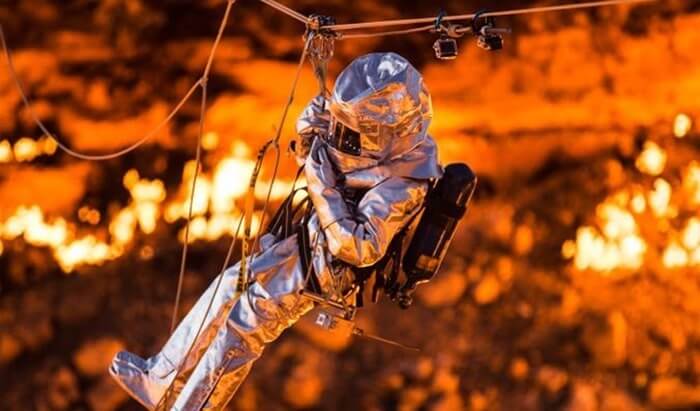 Scientists decided to set fire to the crater to burn off the methane that had formed in the cavern and created Dante's anomaly, which has been burning and burning for the past 46 years.
Scientists decided to set fire to the crater to burn off the methane that had formed in the cavern and created Dante's anomaly, which has been burning and burning for the past 46 years.
4. Fort Bhangar, Rajasthan, India
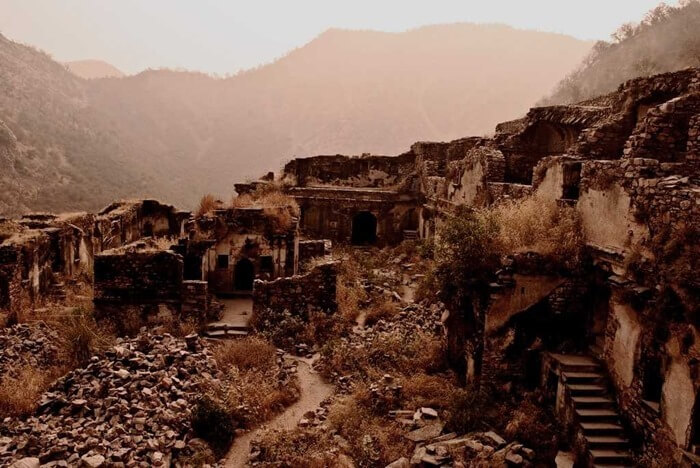 This structure, which looked more like a feudal castle than a military fortification, was erected in the 17th century for the grandson of the military leader Man Singh I. Inside it there were many buildings, including trade shops, temples and even the ruler's palace.
This structure, which looked more like a feudal castle than a military fortification, was erected in the 17th century for the grandson of the military leader Man Singh I. Inside it there were many buildings, including trade shops, temples and even the ruler's palace.
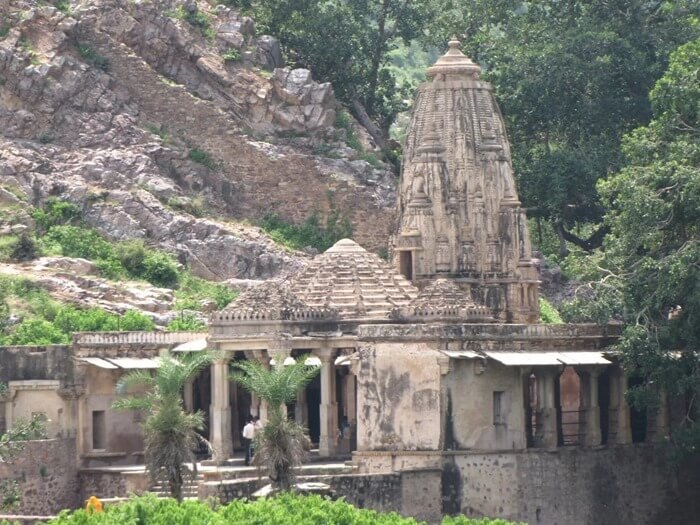 According to one of the local legends, Sinh, an adept of black magic, fell in love with the beautiful princess Ratnawati. Knowing that the girl would not even look in his direction, the sorcerer gave the princess's maid the enchanted perfume to give to the princess. However, Ratnavati broke the perfume when she found out who had given her such a gift. A huge stone appeared from the fragments of the bottle, which rolled towards Sinha's house and crushed him. Before his death, the black magician cursed the inhabitants of Bhangar, promising that they would all die an unnatural death and would not be able to be reborn. A year after the death of Sinha, a war broke out in which all the townspeople died.
According to one of the local legends, Sinh, an adept of black magic, fell in love with the beautiful princess Ratnawati. Knowing that the girl would not even look in his direction, the sorcerer gave the princess's maid the enchanted perfume to give to the princess. However, Ratnavati broke the perfume when she found out who had given her such a gift. A huge stone appeared from the fragments of the bottle, which rolled towards Sinha's house and crushed him. Before his death, the black magician cursed the inhabitants of Bhangar, promising that they would all die an unnatural death and would not be able to be reborn. A year after the death of Sinha, a war broke out in which all the townspeople died.
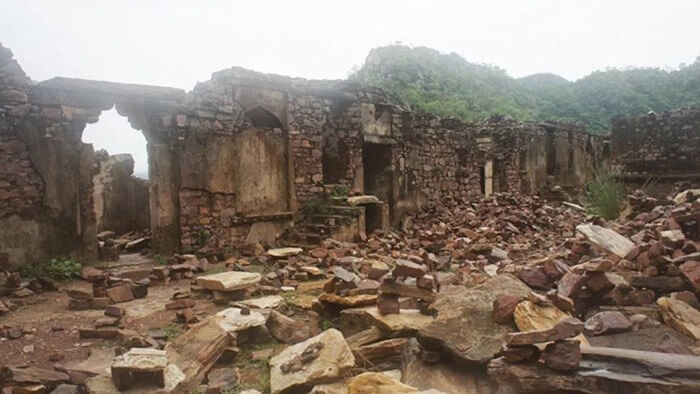 According to another legend, the fort and its inhabitants were cursed by the hermit Baba Balathi, who did not want the shadow of the tallest building in the city to fall on his dwelling. As a result, all the inhabitants of Bhangar disappeared without a trace.
According to another legend, the fort and its inhabitants were cursed by the hermit Baba Balathi, who did not want the shadow of the tallest building in the city to fall on his dwelling. As a result, all the inhabitants of Bhangar disappeared without a trace.
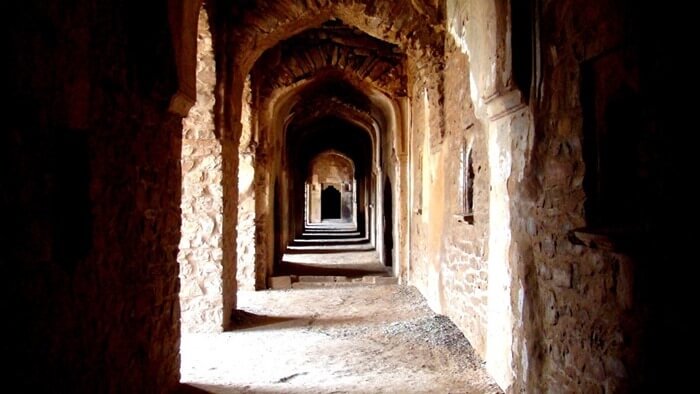 Now no one is allowed into the territory of the fort from dusk to dawn. It is said that those who went to this place after sunset never returned.
Now no one is allowed into the territory of the fort from dusk to dawn. It is said that those who went to this place after sunset never returned.
3. Changi Beach, Singapore
 The now clean and beautiful beach is one of the places where thousands of innocent Chinese people died at the hands of the Japanese during World War II. This event is known as the Suk Ching Massacre (translated from Chinese as “deliverance through cleansing”).
The now clean and beautiful beach is one of the places where thousands of innocent Chinese people died at the hands of the Japanese during World War II. This event is known as the Suk Ching Massacre (translated from Chinese as “deliverance through cleansing”).
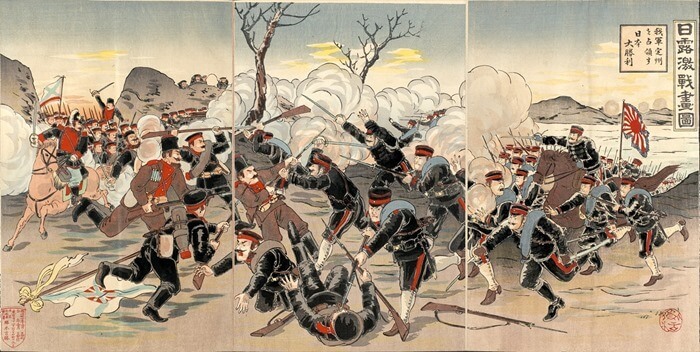 The massacres of civilians were carried out with the aim of annihilating all persons leading an anti-Japanese policy, as well as those loyal to the British Empire and the Republic of China.
The massacres of civilians were carried out with the aim of annihilating all persons leading an anti-Japanese policy, as well as those loyal to the British Empire and the Republic of China.
Japan has never apologized for this terrible event.
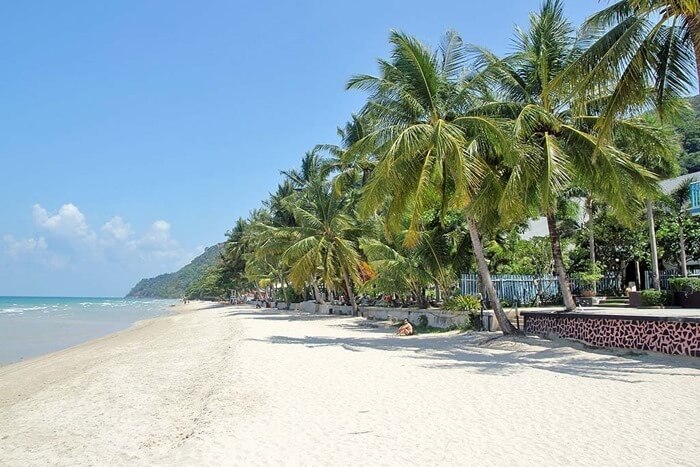 Many people, while visiting Changi Beach, hear crying and screaming, and at night there are supposedly pits for burying bodies.
Many people, while visiting Changi Beach, hear crying and screaming, and at night there are supposedly pits for burying bodies.
2. Snake Island, Sao Paulo, Brazil
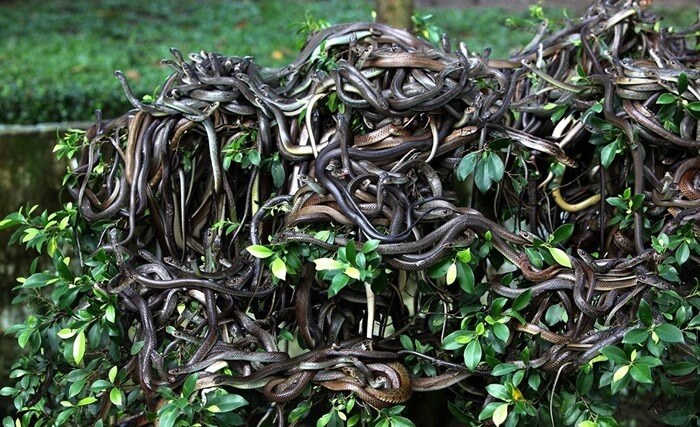 In second place in the top 10 most creepy places on Earth is the island of Keymada Grundy, stepping on which Indiana Jones could groan with complete confidence “Snakes? Why are there always snakes? " If I had time, of course.
In second place in the top 10 most creepy places on Earth is the island of Keymada Grundy, stepping on which Indiana Jones could groan with complete confidence “Snakes? Why are there always snakes? " If I had time, of course.
It gets its nickname because of the insanely high density of golden spearhead snakes (aka botrops). Studies have shown that, on average, one to five the most venomous snakes in the world.
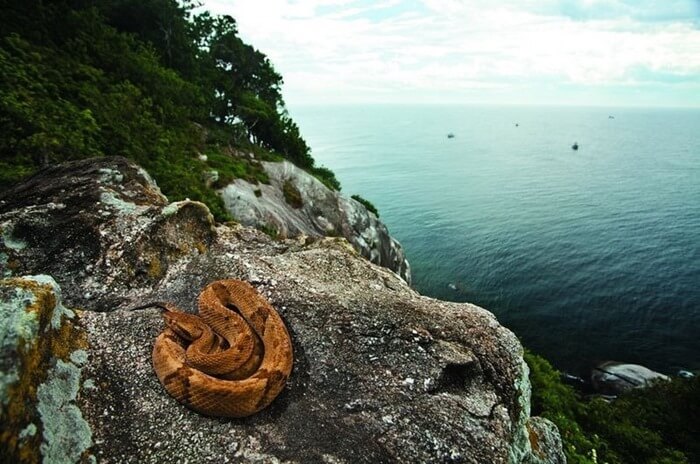 About 11 thousand years ago, the sea level rose and separated the Serpentine Island from the mainland of Brazil. In isolation, snakes did not interfere with breeding and multiplying, and adapting to changing conditions.
About 11 thousand years ago, the sea level rose and separated the Serpentine Island from the mainland of Brazil. In isolation, snakes did not interfere with breeding and multiplying, and adapting to changing conditions.
With no prey left at ground level on the island, snakes have learned to hunt in the treetops and even catch birds on the fly. Their poison has become five times stronger than that of their counterparts from the mainland, it is able to kill its victim instantly, and also literally melts human flesh. Due to numerous deaths while trying to colonize the island, the Brazilian government has forbidden anyone (except for scientists) to step on the surface of Keimada Grande.
1. Paris catacombs
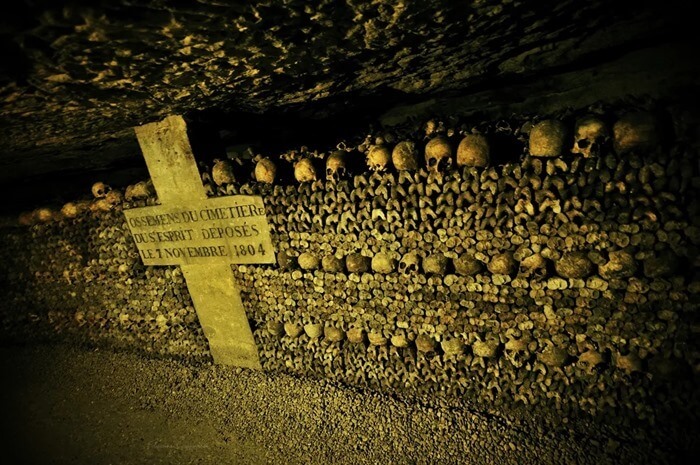 These catacombs are a network of burial chambers that extend 250 km beneath the French capital. They contain the bones of about six million people. They began to be transported there from the end of the 18th century from the overcrowded city cemeteries and continued to be brought there until the mid-19th century.
These catacombs are a network of burial chambers that extend 250 km beneath the French capital. They contain the bones of about six million people. They began to be transported there from the end of the 18th century from the overcrowded city cemeteries and continued to be brought there until the mid-19th century.
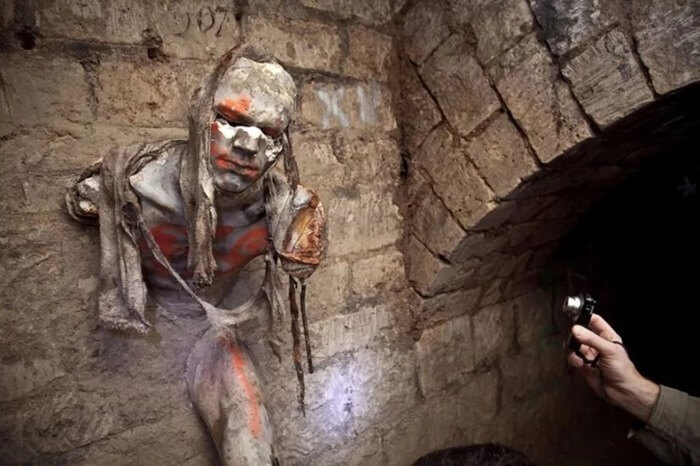 Somewhere in the catacombs are the remains of the famous French - the revolutionary Maximilian Robespierre, the writers Charles Perrault and François Rabelais, the mathematician Blaise Pascal.
Somewhere in the catacombs are the remains of the famous French - the revolutionary Maximilian Robespierre, the writers Charles Perrault and François Rabelais, the mathematician Blaise Pascal.
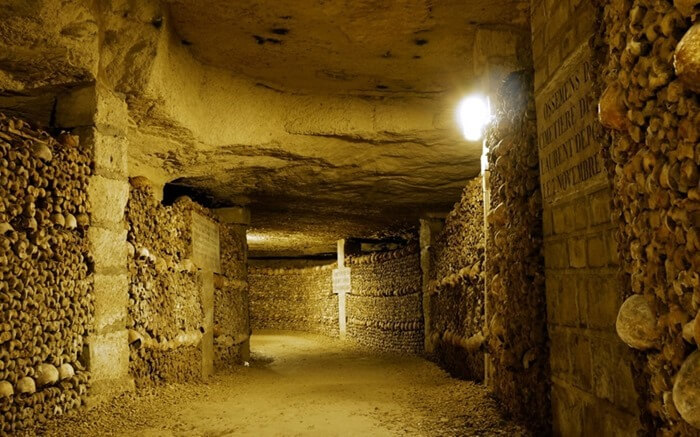 During the Second World War, the headquarters of the Resistance was in the catacombs of Paris. It is curious that just 500 meters away there was a secret Nazi bunker.
During the Second World War, the headquarters of the Resistance was in the catacombs of Paris. It is curious that just 500 meters away there was a secret Nazi bunker.
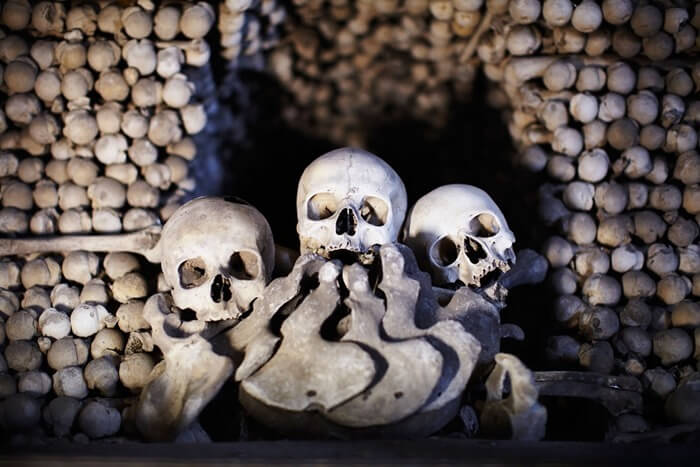 The temperature in the dark, narrow passages is around 15 degrees Celsius and the cold, coupled with countless skulls, creates an atmosphere of fear and despair. Despite this, there are many tourists in the Paris Catacombs (more precisely in the 2.5-kilometer part, open to the public).
The temperature in the dark, narrow passages is around 15 degrees Celsius and the cold, coupled with countless skulls, creates an atmosphere of fear and despair. Despite this, there are many tourists in the Paris Catacombs (more precisely in the 2.5-kilometer part, open to the public).
The scariest places on the planet can be filled with bones and skulls, venomous reptiles and deadly gases. But they have one thing in common - it is better to read about them ten times than to visit them once.

